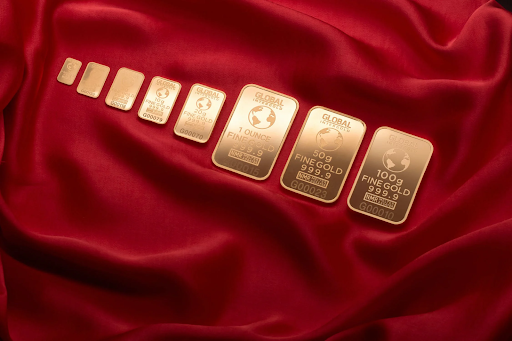If you are wondering whether investing in precious metals is a promising idea, you will need to consider some factors. You need to keep in mind the distinct types of precious metals, as well as how they are marketed and traded.
1. Exchange-traded funds are quite easy to learn about
If you are interested in investing in precious metals, exchange-traded funds can offer you a straightforward, liquid way to do so. However, you should be aware of some key differences between ETFs and physical bullion. Investors can also expect to pay an extra fee for using an ETF.
This fee is often called an expense ratio. The expense ratio covers the costs of storing, administrating, and protecting the investment. However, these fees do not add up to a lot. They can be as low as 0.2%, or as high as a whopping 1.2%.
In contrast, buying physical gold or silver coins can be very costly. There are shipping costs to consider, and there is the potential for the metal to lose value. Investing in precious metals ETF can provide investors with access to physical bullion, but there is no guarantee that you will be able to exchange your ETF for actual gold or silver.
2. Certificates are a necessary evil
One of the biggest problems with these products is that they are not guaranteed to be backed by the correct amount of gold. According to this Goldcore review, this can be caused by a few things. For example, a bank may not have enough gold to back all of the certificates. It is also possible for a certificate to be duplicated. If this happens, the value of the certificate is reduced.
A second issue is that a good number of certificate programs have gone out of business. Having a certificate that can be exchanged for gold does not mean it will be a valuable asset. The most important thing to remember when purchasing a certificate is to look for an assay. An assay tells you the quality of the product.
Aside from the assay, another feature to consider is whether the certificate is allocated or unallocated. Allocated accounts allow the owner to own a specific coin, bar, or a combination of the two.
3. Bars and coins are an option
If you are thinking about investing in precious metals, you should have a good understanding of the differences between bars and coins. Knowing what each is and what they are good for will help you protect your investment.
Gold and silver coins are legal tenders, which means they are an excellent choice for trading and investing. They are easy to store and come with government assurance of quality. You can also buy them for below the market price of the metal.
Bars and coins can be purchased in varied sizes, weights, and designs. Depending on your preferences, you can choose from a one-ounce coin to a 10-ounce bar. These options can be purchased directly from an authorized dealer or through a brokerage.
In addition to being legal-tender money, coins have the added benefit of being recognized as collectibles. Collectors will often pay a higher premium for a particular type of coin, according to https://www.usmint.gov/learn/collecting-basics/glossary. However, coins may be less convenient than bars.
Some coins are stamped with their design or serial number. This may reduce fraud risks. Another advantage is the fact that coins are easier to trade than bars. A bullion coin has a smaller premium over the spot price. Because of their lower manufacturing costs, these coins are also cheaper per ounce.
On the other hand, rounds, or circular discs, are manufactured by minting companies from around the world. Each includes its own mint logo and weight, as well as its purity. Although they do not have the same value as a coin, they are an excellent choice for collectors and investors.
Both are useful for diversified portfolios, but each has its own advantages. Bars are more compact, durable, and portable. Purchasing them in larger quantities can lead to faster returns on your investment. But you should be careful about which one you choose.
4. Political uncertainty affects prices, so watch out
Uncertainty in political and economic conditions can affect commodities and commodity prices. Prices of precious metals like gold and silver are often affected by the risk of uncertainty. However, there has not been enough research to determine how these factors impact the economy.
Several studies have explored the effect of policy uncertainty on stock market returns. They have also examined the links between the uncertainty of policy decisions and macroeconomic indicators. The results are mixed.
Some of these studies indicate that uncertainty has negative effects on investment decisions. Higher uncertainty delays firms’ plans for investments and consumption. This leads to lower investment and lower output.
In some cases, this leads to lower demand and inflation. High inflation causes inefficiencies and dampens the overall welfare of society. Studies have shown that high inflation can be caused by several factors.
Another study finds that rising price uncertainty can reduce real economic activity. Henzel and Rengel (2017) found that heightened uncertainty is associated with a persistent decline in real economic activity. These researchers used a sample of eighty-seven commodities traded in twelve countries.
5. There can be drawbacks
In recent years, precious metals have been steadily climbing in price. Although this is a positive sign, it is also important to consider the pros and cons of investing in this type of asset. Investing in precious metals may offer you an opportunity to diversify your portfolio and increase your savings.
It can help you reduce your overall risk by reducing the likelihood that your other investments will perform poorly. While gold is one of the most expensive assets available, there are many other options. You can invest in mining companies, exchange-traded funds, and commodities futures.
The key to successful precious metals investing is a solid risk management strategy. For instance, you can choose to buy coins or other bullion to keep in your home. This will protect you from a sudden price dip and will give you a more stable and secure portfolio.








